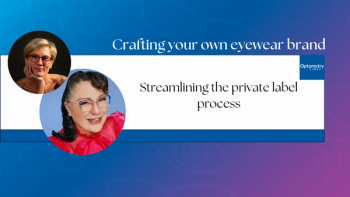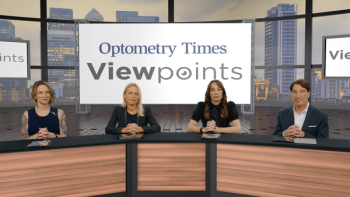
AAOpt 2024: Streamlining OD/MD comanagement in complex myopia cases
Noreen Shaikh, OD, Magdalena Stec, OD, FAAO, and Brenda Bohnsack, MD, PhD, emphasize that collaboration and communication are key to proper diagnosis and treatment.
Noreen Shaikh, OD, Magdalena Stec, OD, FAAO, and Brenda Bohnsack, MD, PhD, detail a Rapid Fire session they presented with Huizi Yin, OD, FAAO, titled "Complex Myopia Cases: Management Considerations by a Pediatric OD/MD Team" at the American Academy of Optometry 2024 meeting.
Video transcript:
Editor's note: The below transcript has been lightly edited for clarity.
Noreen Shaikh, OD:
I'm Noreen Shaikh, a pediatric optometrist at Lurie Children's Hospital.
Magdalena Stec, OD, FAAO:
Hi, I'm Magdalena Stec, also a pediatric optometrist at Lurie Children's Chicago.
Brenda Bohnsack, MD, PhD:
Brenda Bohnsack. I'm a pediatric ophthalmologist at Lurie Children's Hospital in Chicago.
Saikh:
So our lecture today was talking about complex myopia cases, cases in which we don't have evidence based treatments available. The biggest takeaways here from our lecture today were that if we don't have treatments– so we have a lot of good evidence based medicine and evidence based treatments for myopia control in simple myopia, but if you don't have the data, we encourage people to really think about it and apply treatments to those that won't necessarily fall into the typical myopia category.
Stec:
I think the best time to refer for myopic clinic in general is at a very young age. So the younger, the better. When we detect myopia earlier, we have many options to A: prevent it, B: educate families what to do naturally to control it. For example, get outside. And then if they have myopia, educate them about the current treatment options, and there is a lot of exciting choices for them.
Some of the most common complex myopia cases are high refraction, so something above 6 diopters of myopia. Another one could be a case with a high amount of astigmatism. There are some cases of very young children, like 2 or 3 years old, who have something called anisometropia, so one eye is different than the other. One eye can have no refraction, and the other eye can have a really big refraction.Another one that we can think of are some cases with complex medical histories. We didn't get into those cases with our presentations, but there are lots of complex myopia cases that definitely need to be discussed at the table for myopia control.
I think the highlight of this is, actually, I want to emphasize collaboration. So here we're presenting with pediatric ophthalmologists. So I think pediatric optometrists and pediatric ophthalmologists have to be at the table and be able to have an open conversation about it, because sharing ideas and discussing the options, coming up with reasonable solutions and evidence based medicine for these patients. So I do want to emphasize: the key is collaboration, and we need to do it more in order to find the best solutions for our patients.
Bohnsack:
So, I mean, I think really what it comes down to is team collaboration, and especially, I think the the issue comes with these complex cases where there can be more ophthalmological issues than just myopia. So there may be underlying disease such as Stickler syndrome. And we also talked about a case of a child who was pseudophakic after infantile cataract surgery. And so those are cases where you have to consider not only the myopia, but the underlying disease and whether myopia control is relevant and should be pursued.
Saikh:
I think the key takeaways from our lecture today were that we have a lot of evidence based medicine for myopia control, and we have a lot of data, but it's important to use it, but don't be limited by it. Apply what you know to other cases. In addition, we are lacking a lot of studies on an understanding of myopia and its onset and its progression. And so there's really a need to be having the conversation about myopia, not [only] with your eye care provider colleagues, but also with teachers, with pediatricians, with parents, with people in your everyday life, because it's really going to take a collaborative effort to really understand and make a difference you.
Newsletter
Want more insights like this? Subscribe to Optometry Times and get clinical pearls and practice tips delivered straight to your inbox.












































.png)


